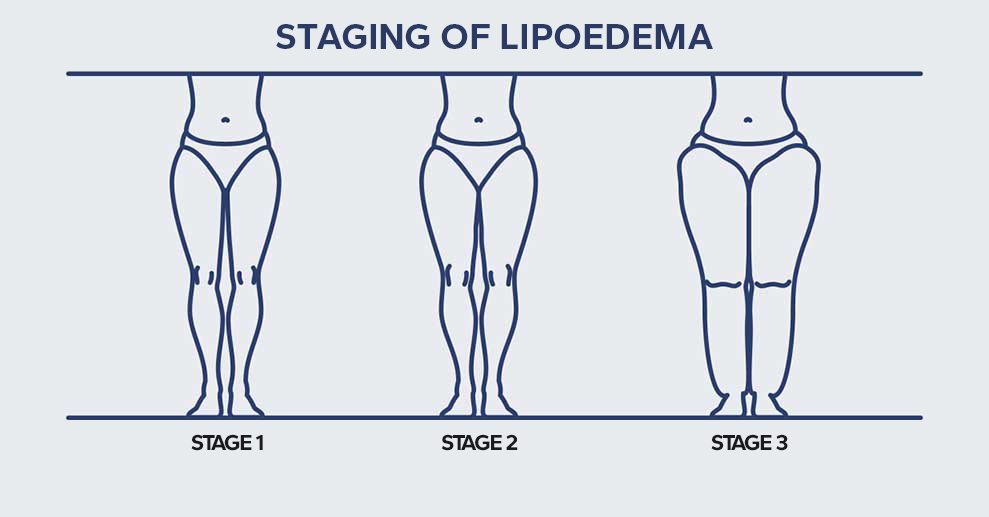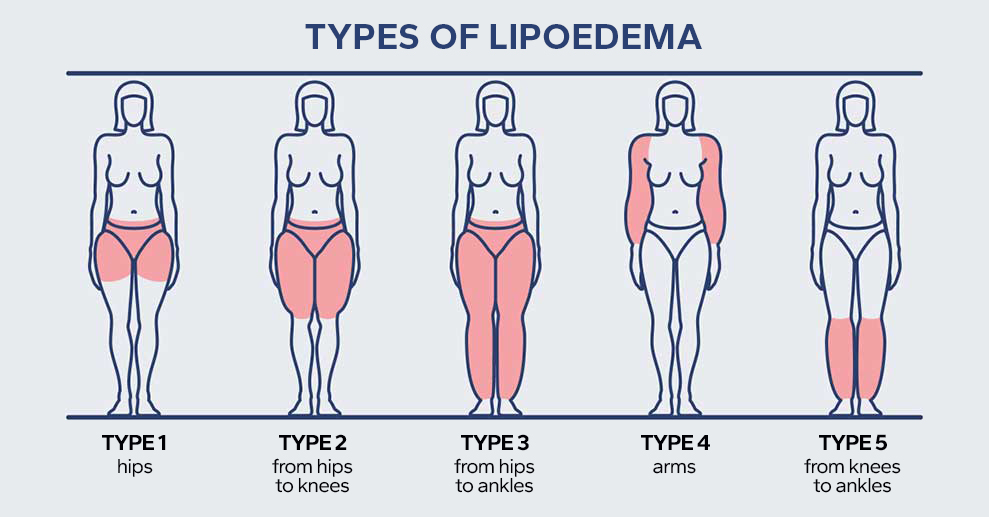LIPOEDEMA:
what it is and what to do.
Have you ever heard of lipoedema? This chronic disorder, still poorly known and often underestimated, can have a significant impact on life quality.
Recognising it in time and treating it appropriately can help improve both physical and emotional well-being of sufferers.
What is lipoedema?
Often associated with swelling and pain, if neglected, lipoedema can lead to a progressive reduction in mobility and significant physical changes with a consequent strong impact on the quality of life and self-esteem of the person.
The exact causes of lipoedema are still a matter of study. It is a condition that mainly afflicts women and is often associated with hormonal changes, such as those occurring during puberty, pregnancy, or menopause.
Furthermore, genetic predisposition is hypothesised, as family cases are common.
Classification, stages, and types
Lipoedema develops progressively and is classified into three stages according to the bulkiness of fat deposits and the appearance of the skin, which changes from a smooth surface to a more irregular and nodular one.
We then classify five types of lipoedema, which identify the body areas affected by the disorder:
There is also a pathological form known as lipo-lymphoedema, which, however, should not be mistakenly considered as a more severe form of lipoedema, but rather a form of secondary lymphoedema that should be addressed by professionals and lymphoedema experts.
Classifying lipoedema is essential to identify an appropriate treatment. Without a timely intervention, this disorder tends to worsen, to the point of compromising mobility and quality of life in more advanced stages.


How to recognise lipoedema?
-
Symmetrical adipose accumulation
Mainly concentrated on legs and arms.
Disproportion between torso and limbs
Torso appears relatively slender, while both limbs appear swollen, without involvement of hands and feet.
Capillary fragility
Skin is particularly delicate and prone to bruising or haematomas, even after minor traumas.
Pain and sensitivity to touch
The affected areas are painful even to the lightest touch.
Persistent swelling
The feeling of heaviness and swelling does not decrease even with rest.
Resistant fat
The adipose tissue is not reduced by diet or physical activity.
Have you noticed one or more of these symptoms?
If you suspect that you suffer from lipoedema, see a specialist for a thorough assessment.
Difference between lipoedema and lymphoedema
Although often confused, lipoedema and lymphoedema are two distinct conditions.
- Lipoedema is characterised by a disproportionate accumulation of fat in specific body areas and is often accompanied by pain and sensitivity to touch.
- Lymphoedema, on the other hand, is an accumulation of lymph in the tissues, caused by a malfunction of the lymphatic system.
The key difference between the two conditions is the involvement of hands and feet.
With lipoedema, hands and feet are not affected, whereas with lymphoedema, the swelling may also extend to these extremities.
How to manage lipoedema
Attraverso un approccio integrato è però possibile affrontarlo. Ecco alcune strategie utili:
- Embrace a healthy lifestyle: do not start restrictive or low-calorie diets but rely on an experienced nutritionist to devise a proper diet plan specifically aimed at lipoedema, not only to keep weight under control, but also to limit inflammation.
- Engage in physical activity: choose low-impact exercises, such as swimming, aqua aerobics, aqua jogging, or activities that do not cause excessive strain.
- Wear compression stockings every day:elastic-compression is a valuable resource to relieve swelling and pain. Compression stockings, furthermore, improve daily well-being by acting on inflammation and promoting venous and lymphatic return.
Emotional and social impact
Finding out that you suffer from lipoedema can have a strong emotional impact, affecting not only your quality of life but also your social relationships. The diagnosis, often late or incorrect, can generate frustration and a sense of isolation. In addition, the physical appearance related to this disorder can jeopardise your self-esteem, leading to difficulties in self-acceptance and episodes of social stigma. It is important to recognise these emotional aspects and tackle them with the right support, including psychological support, to face daily challenges with serenity. At the same time, exchanging experiences with other people with lipoedema, maybe through support groups, can be a valuable source of comfort, inspiration, and motivation.
The importance of awareness raising
Lipoedema is still too often underestimated and underdiagnosed. Raising awareness is key to sensitising the public opinion, promoting timely diagnosis and expanding treatment opportunities.
Conclusion
Recognising symptoms, seeking medical advice and adopting an appropriate lifestyle, in combination with specific treatments such as elastic-compression, can make a big difference, and significantly improve the quality of life of sufferers.